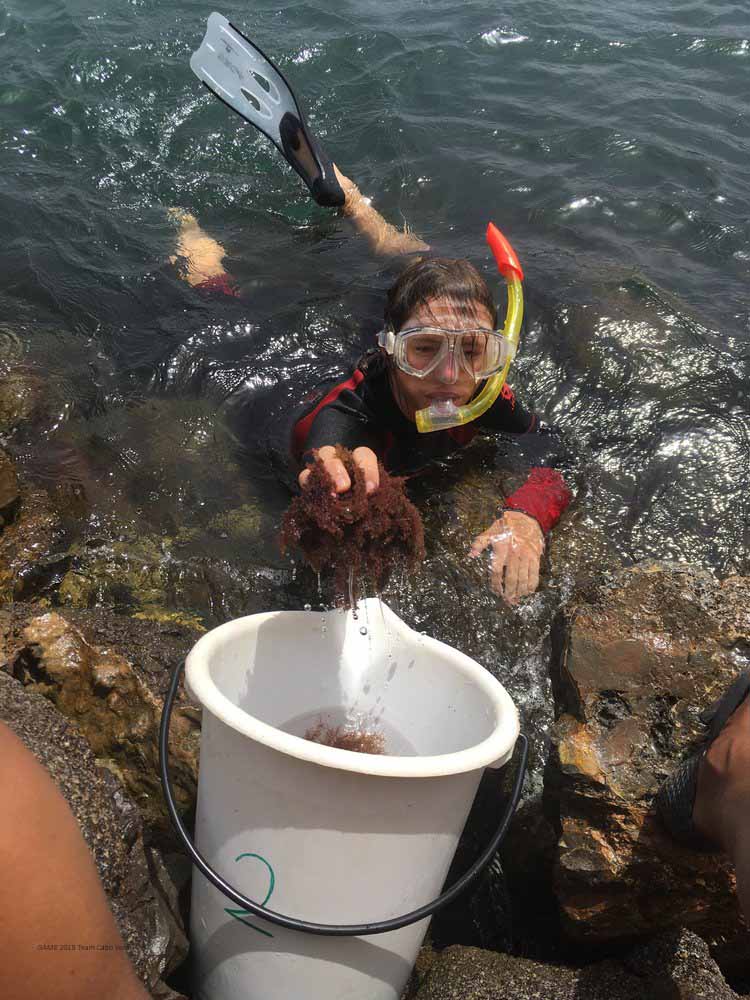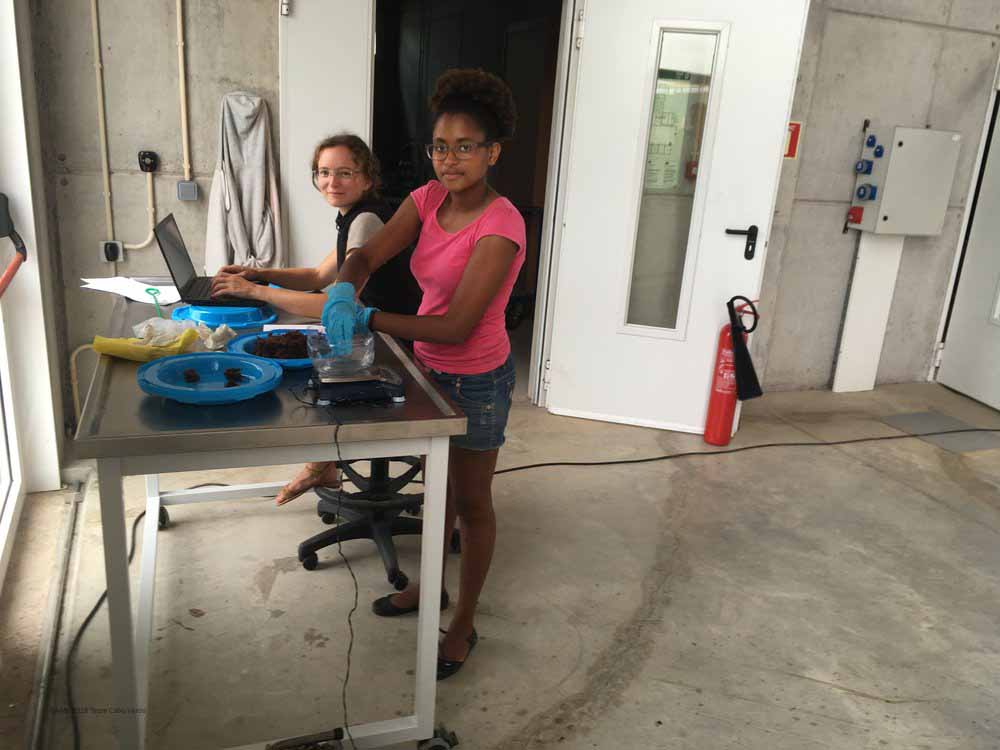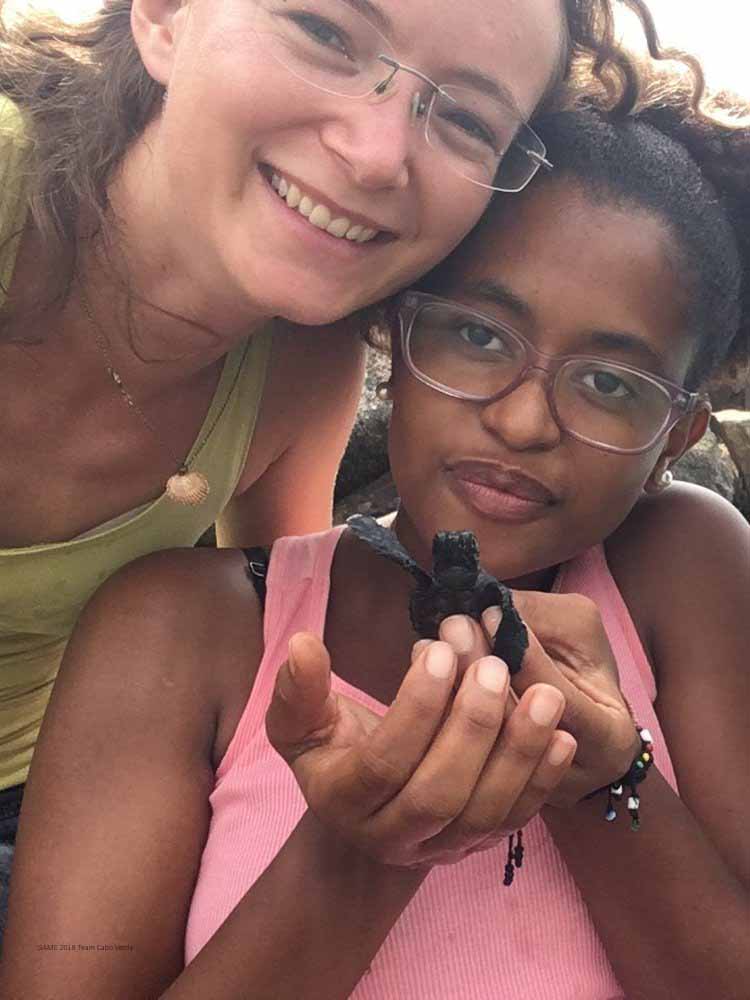Here is a latecoming blog from GAME 2018. We have been the first GAME students to conduct experiments at the Ocean Science Centre Mindelo (OSCM) on the island of São Vicente that belongs to the archipelago of Cabo Verde. It was exciting for us to explore a new GAME site but also exhausting and laborious. We spent 6 months at the OSCM during which we were working on our experiments. During this time, we received a lot of help from the institute and from the University of Cabo Verde (Uni CV). It was a great experience for us and we learned a lot. But let’s start from the beginning.
At the OSCM we shared an office with two other Cabo Verdian students, who were working on their Bachelor theses. From our working desk, we had a beautiful view on the bay of Porto Grande and the neighbouring island Santo Antão. Every day, we watched a lot of ships coming and leaving the bay, which were bringing fish from the sea, goods from other countries or were moving people between the islands. And as soon as we had built up our experimental set-up in the outside area of the OSCM, this was part of our view, too. But that took us a while.
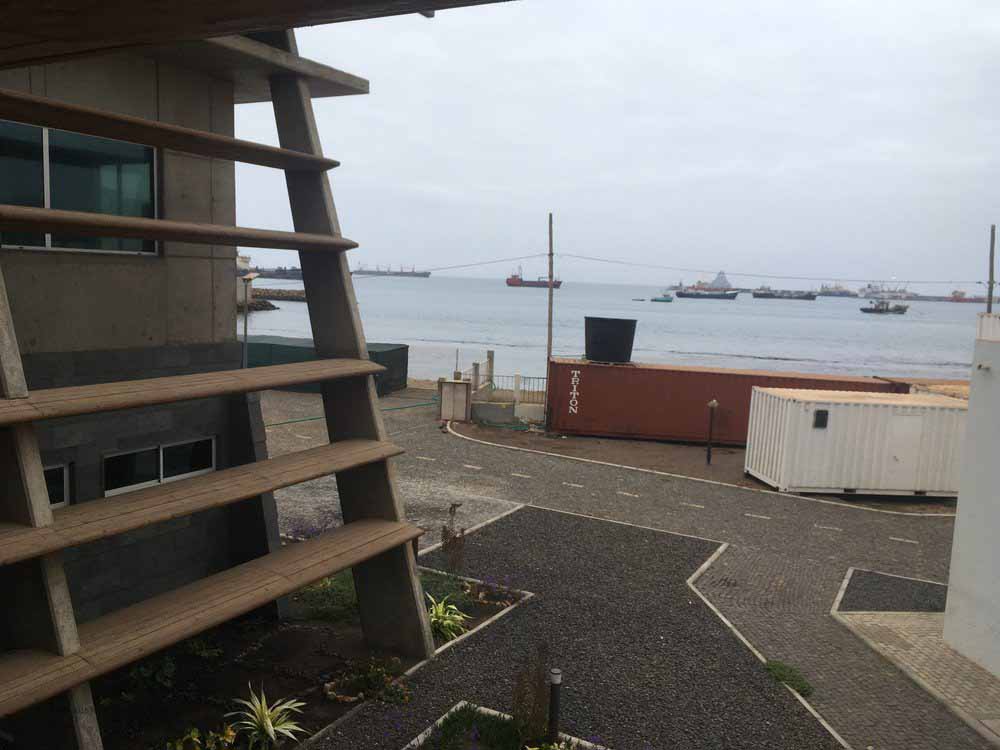
We needed the first weeks to get to know our terrestrial as well as our marine environment. In the latter, we searched for an invertebrate species that we could use as a herbivore organism for our experiments. We found a lot of sea urchins in the intertidal pools, but they did not want to eat the algae we offered to them in the laboratory. So, we finally decided to use the sea hare Aplysia dactylomela, which is an abundant macroalgae grazer in the area and which fed readily in the laboratory. The sea hare can get up to 30 cm in length, but the individuals we found were “just” about 7-8 cm long. Still they were the largest test organisms that were used during this year’s GAME project and because of this we had to build a gigantic set-up compared to the other teams.
Since we were the first GAME team working in Cabo Verde, we needed to build the experimental set-up from the scratch. It took us nearly 3 months to get everything settled so that we were able to start with our experiments. As a consequence, while the other teams were already discussing how to grow the algae and were conducting pilot studies, we were still facing organizational issues. We experimented with a pump to get sea water from the nearby bay into our system, cleaned five large sheets of pond foil and put them in metal frames to form tanks for the seawater, we drove around to buy tubes and connectors, searched for 5 l water bottles as aquaria for our animals and, among other things, we bought 130 airstones to aerate the aquaria with pressured air. By this, we learned how to be a mechanic, an electrician, a manager and a cleaning lady (as you can see we super-improved our skills during this project 😉 ).
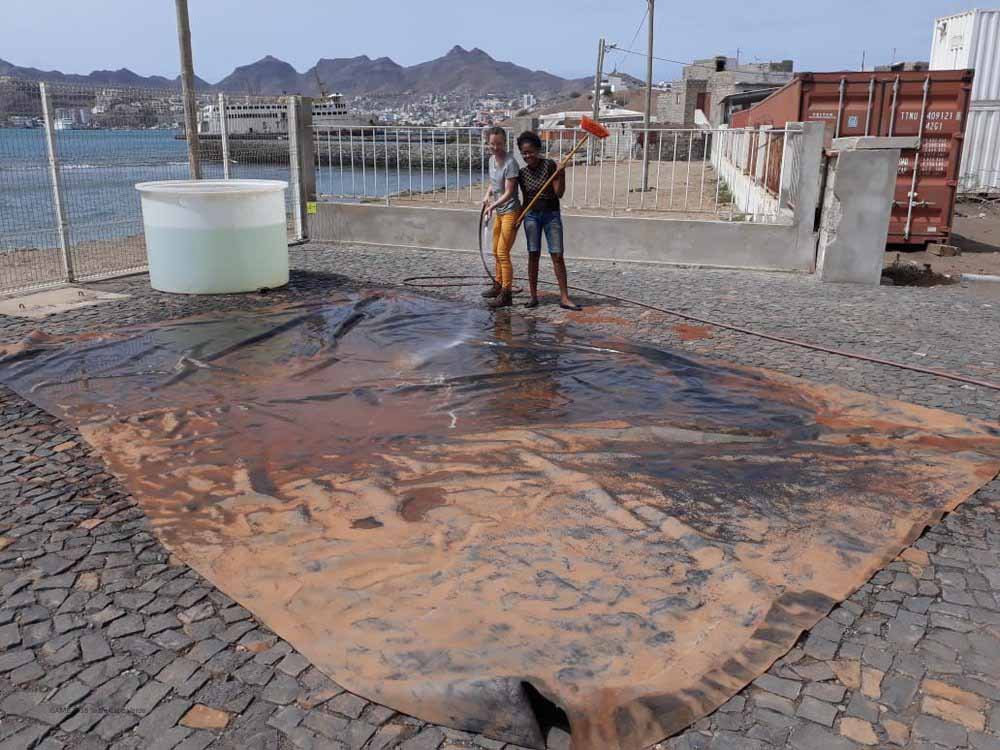
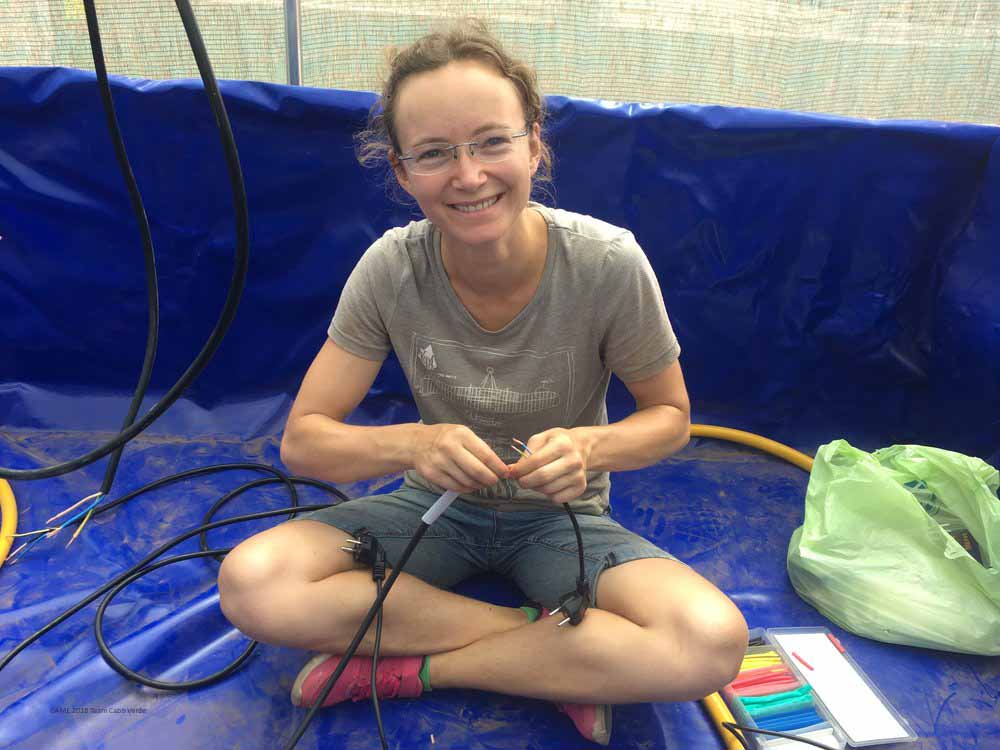
In the end of May, we were lucky to get invited to participate in excursions in the framework of a summer school that was organised by the German/Canadian HOSST/TOSST PhD programme. The geologists, who also participated in this summer school, introduced us to the formation of the volcanic islands of Cabo Verde. So we learned how the coastlines and landscapes of the Cabo Verde archipelago formed and that dykes hold the islands together (sorry, if we oversimplify it a bit 😉 ).
Then in August we finally had everything put together and could fill our tanks with seawater for the first time. After we put the individual containers, in which we later placed the test animals, into the larger tanks that we made from the pond foil, and equipped all of them with air supply, we were ready to go sampling our test animals. Together with our supervisor Dr. Corrine Almeida we went to the rocky shore of Praía Grande (in the northeast of the island). There we collected the seahares during low tide in intertidal pools in which the water temperature can easily exceed 30 °C. When we caught them, they excreted a pink ink, similar to an octopus. We transported them in large buckets to the OSCM and as soon as we arrived in the lab, we put the animals into their individual containers. From this day on, we had no holidays anymore – until we finished our experiments. Every day we needed to clean the containers and feed the sea hares with fresh algae. They were like our children 😉
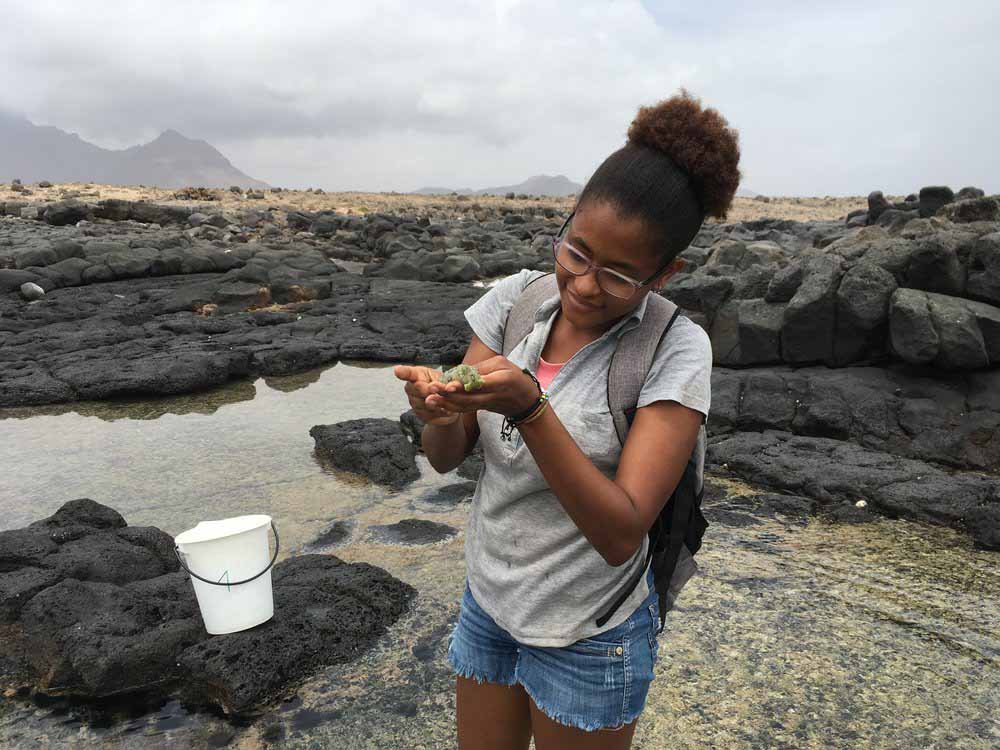
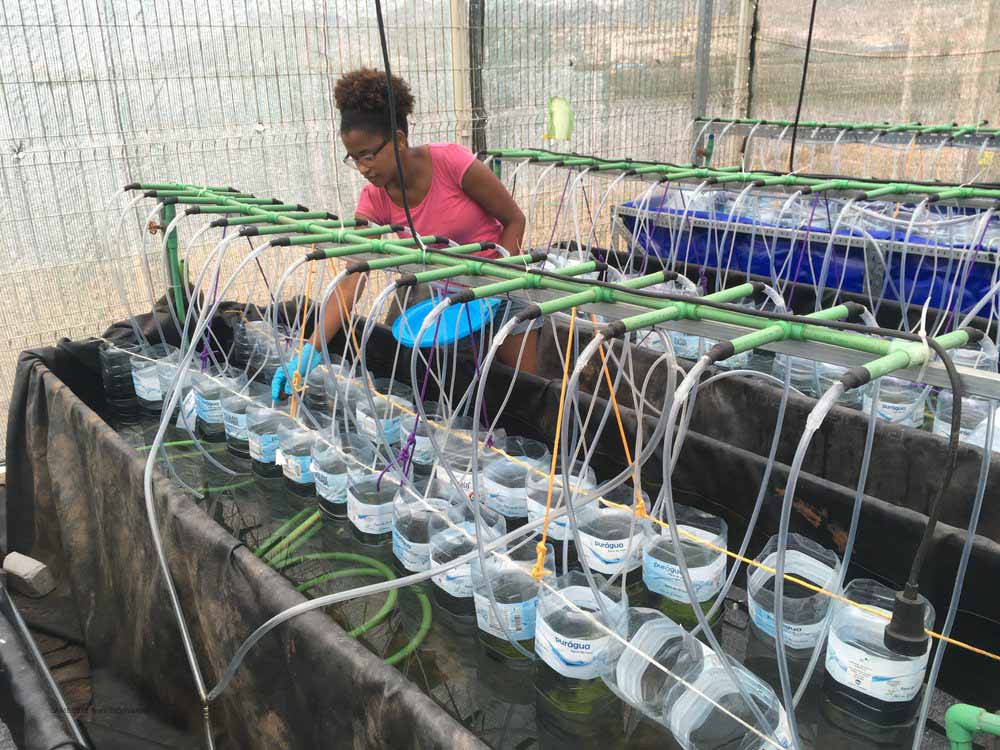
During these work intensive days, we also became guardian angels for a baby turtle. Two teenagers found it at the beach and brought it to the OSCM, because it did not find its way to the sea. So we stopped our work for a moment and took it to a sheltered place to put into the water and it swam out to the wide ocean. This was a happy moment.
In the middle of September, we run multiple choice feeding assays, which were a central element of our experiments, with three different algae species that we collected fresh from the sea. We started with measuring algal wet weights in the afternoon and it took us until the sun dropped. As our experimental set-up did not had any light supply, the security men, who were always around, lighted up the tanks for us with their phones. After the algae were exposed to grazing by the sea hares for 24h, we measured how much of the algal biomass remained and then we had finished this important part successfully 🙂 But we were just not relieved before we had brought back the sea hares to their home place at the shore of Praía Grande the day after. At this point, we had one week left to clean up our work space as well as to deconstruct and store our set-up in the Uni CV. And then it was already time to say good bye to the OSCM, the sun, our beautiful view and to head for the cold, grey and rainy Kiel to see which results we got 🙂
